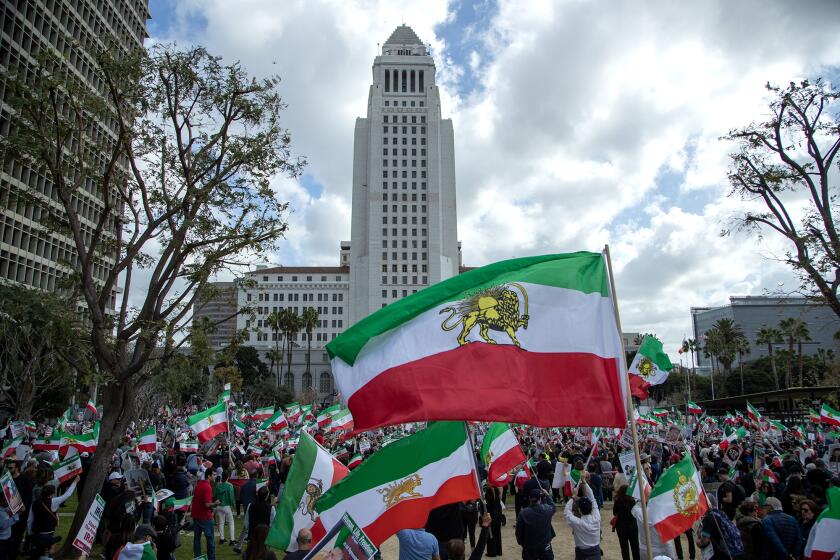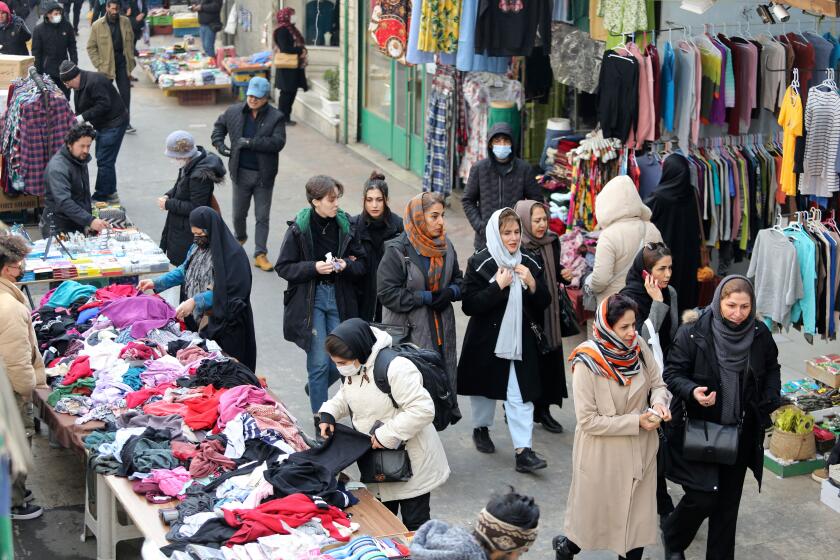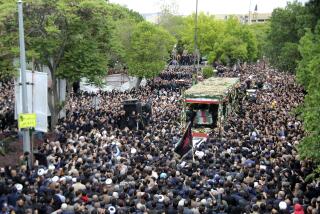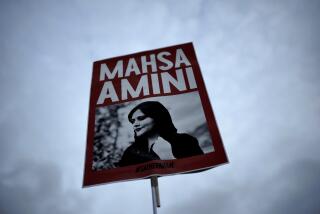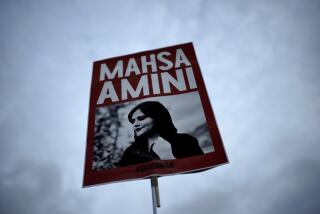Anti-government protests hit Iranian cities for first time in weeks
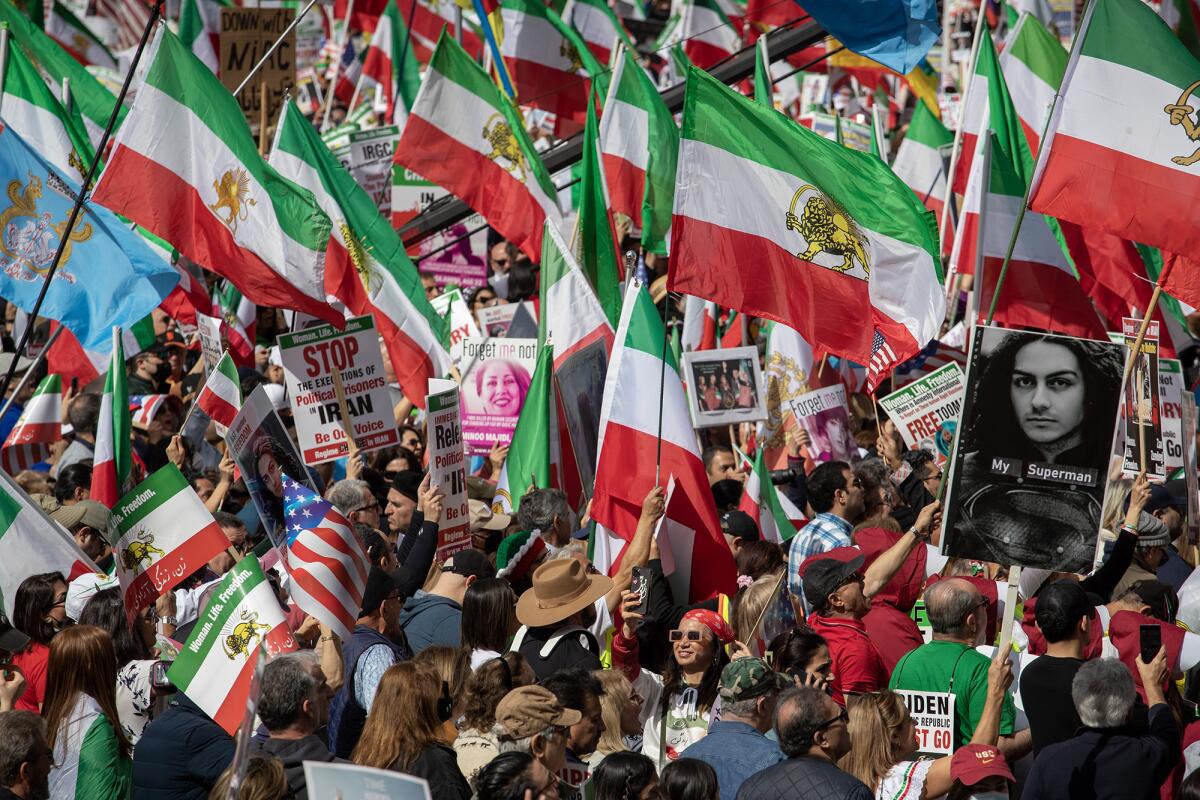
- Share via
DUBAI — Protesters in Iran marched in multiple cities overnight in the most widespread demonstration in weeks amid the months-long unrest that has gripped the Islamic Republic, online videos appeared to show Friday.
The demonstrations, marking 40 days since Iran executed two men on charges related to the protests, show the continuing anger in the country. The protests, which began over the Sept. 16 death of 22-year-old Mahsa Amini after her arrest by the country’s morality police, have since evolved into one of the most serious challenges to Iran’s theocracy since the 1979 Islamic Revolution.
Videos showed demonstrations in the Iranian capital, Tehran, as well as in the cities of Arak, Isfahan and Izeh in Khuzestan province and Karaj in Alborz province, the group Human Rights Activists in Iran said.
The Associated Press could not immediately verify the videos, many of which had been blurred or showed grainy nighttime scenes.
In Iran’s western Kurdistan province, online videos shared by the Hengaw Organization for Human Rights showed burning roadblocks in Sanandaj, the provincial capital, which has seen repeated demonstrations since Amini’s death.
Hengaw shared one video that included digitally altered voices shouting, “Death to the dictator!” That call has been repeatedly heard in the demonstrations, targeting Iran’s 83-year-old Supreme Leader Ayatollah Ali Khamenei. Other videos purportedly shot in Tehran had similar chants, as well as scenes of heavily protected riot police in the street.
Iranian state media did not immediately acknowledge the demonstrations.
Thousands gathered outside L.A. City Hall, calling for regime change in Iran and rallying in solidarity with the country’s female-led protest movement.
At least 529 people have been killed in demonstrations, according to Human Rights Activists in Iran. More than 19,700 others have been detained by authorities amid a violent crackdown on the dissent.
The Iranian government for months has not offered any overall casualty figures, though the government seemed to acknowledge making “tens of thousands” arrests earlier this month.
The demonstrations had appeared to slow in recent weeks, in part because of the executions and crackdown, though protest cries could still be heard at night in some cities.
Commemorations for the dead after 40 days are common in Iran and the wider Middle East.
But they also can turn into cyclical confrontations between an increasingly disillusioned public and security forces that resort to greater violence to suppress them, as they had in the chaos leading up to the 1979 Islamic Revolution.
Iran’s hard-line government has alleged, without offering evidence, that the demonstrations are a foreign plot rather than
the result of homegrown anger.
Iranians are finding it harder than ever to afford even basic goods as political unrest roils the country and the government cracks down harshly.
The country’s rial currency has collapsed to new lows against the dollar. Iran continues to enrich uranium closer than ever to weapons-grade levels after the collapse of its nuclear deal with world powers and has enough of a stockpile to build “several” atomic bombs if it chooses.
Meanwhile, Tehran is arming Russia with the bomb-carrying drones that Moscow has been using in the war in Ukraine.
More to Read
Sign up for Essential California
The most important California stories and recommendations in your inbox every morning.
You may occasionally receive promotional content from the Los Angeles Times.
